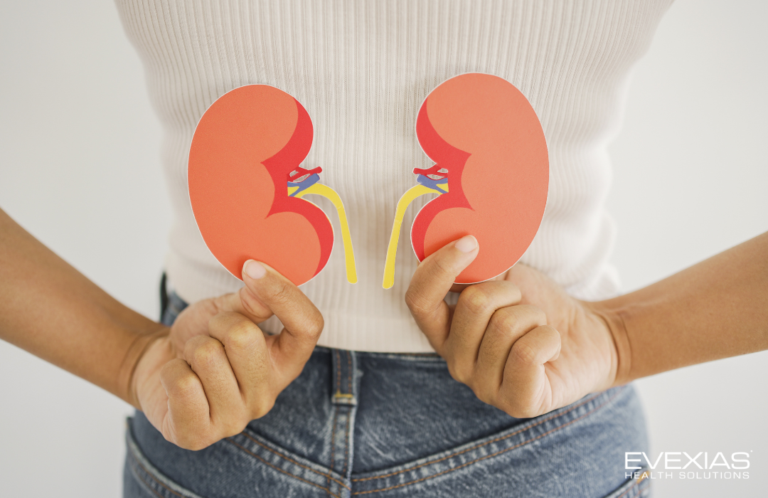Hormone replacement therapy (HRT) can be life-changing. By returning key hormones to optimal levels, this innovative therapy addresses hormone-related symptoms at their source and may play a key role in protecting your long-term health. While there are many treatment options available, pellet therapy may be the best way to experience the benefits of HRT.
Implanted during a short in-office procedure, hormone pellets are a state-of-the-art solution that mimics your body’s natural hormone release and provides months of steady hormone supply. There’s no pill to remember, no patches to apply, no peaks and valleys to weather. Instead, your doctor simply inserts new pellets 2 to 4 times a year. It’s no wonder that both men and women are increasingly choosing hormone pellet therapy.
But even if you think the treatment sounds promising, you may be concerned about the pellet therapy insertion procedure. Taking a closer look at what happens during and after insertion may put your mind at ease.
Getting Started
Whether you’re considering HRT for the first time or are already taking HRT in another form, finding a hormone health expert who specializes in hormone therapy is invaluable. Your first visit will involve an in-depth conversation about what you are experiencing and what your goals are. To gain a clear picture of your needs, your doctor will also require the following:
- Detailed personal and family history: Your own medical history and that of close family members may offer insights into your hormonal issues and overall health. For women, pap and mammogram history will be particularly significant. For men, prostate health history is important. Previous surgeries and current medications should be noted as well. If you are taking HRT or have taken HRT in the past, be sure to tell your doctor about your treatment experience, including the impact on your symptoms and any side-effects.
- Physical examination: A physical exam will help your doctor assess your current health and rule out conditions that mimic hormone imbalance.
- Symptom assessment: Your doctor will likely use a questionnaire to understand which physical, cognitive, and emotional symptoms you are experiencing and how severe those symptoms are. The same tool will be used to assess treatment progress.
- Diagnostic lab testing: Lab tests are essential to diagnosing hormonal health conditions and identifying your needs. This may include measuring sex hormones, thyroid hormone, and sex hormone binding globulins as well as a complete blood count and a comprehensive metabolic panel. A baseline prostate-specific antigen (PSA) should also be established for men.
With a full understanding of your health, your doctor can determine if you are a good candidate for HRT and explain the benefits and risks of hormone pellet therapy. If you decide that pellet therapy is right for you, your first pellet therapy insertion will be scheduled.
Before Insertion
You should stop taking any blood-thinning medications, including ibuprofen, aspirin, and acetaminophen, one week before the procedure. If your doctor has instructed you to take any such medications daily, you must consult with them before stopping.
The Pellet Insertion Procedure
On the day of the pellet insertion procedure, you will arrive for your appointment at your doctor’s office. After settling comfortably on your side, the implantation site on your hip or abdomen will be uncovered and swabbed with an antiseptic solution. A sterile drape will be placed to keep the area clean and protect your clothing. You will feel a small needle stick as your doctor injects a local anesthetic to numb the site.
After waiting a few minutes for the numbing agent to take effect, your doctor will prepare the sterile pellet(s) for insertion. A tiny incision, just a few millimeters in length, will be made, and the pellet(s) will be inserted into the fat at the prepared site. The number of pellets implanted and the hormones included will be determined by a variety of factors, including your age, weight, blood hormone levels, and activity levels. Once the pellets are placed, the small incision will be closed with Steri-Strip tape and covered with a protective dressing. This will be left in place until it falls off naturally in a week or so.
The entire procedure should take just 10-15 minutes. You may be given a small ice pack to prevent inflammation and ease discomfort as the local anesthetic wears off. You will receive post-procedure instructions and an appointment for follow-up blood testing in four to six weeks.
Post-Insertion Procedure Instructions
Before you leave your doctor’s office, you will receive aftercare instructions that will help you support healing. These may include:

Keep the incision site clean.

Keep the incision site completely dry for 24 hours.

No hot tubs, tub baths, or swimming for 3-5 days.

Avoid exercise and jarring activities for approximately one week.

For insertions above the belt: no twisting, side crunches, golf, etc.
With careful adherence to the post-procedure recommendations, your insertion site should heal and you can return to unrestricted activities in 3 to 5 days.
Pellet therapy insertion is typically very safe. Some redness, irritation, pain, and swelling is normal immediately following the procedure, but these should resolve within a few days. If these symptoms persist beyond that, call your doctor.
Follow-Up Care
Your doctor will provide regular aftercare to track your progress and monitor your hormone levels. Follow-up lab testing and check-ins to discuss symptoms and side effects will help your doctor refine your treatment plan and determine when your next pellet therapy insertion should take place.
Toward Greater Wellness
With the pellet therapy insertion process demystified, you can start your journey toward symptom relief and long-term wellness. But improving hormonal health isn’t just about HRT. As part of your treatment plan, your doctor should offer guidance on diet, exercise, supplements, and lifestyle strategies that promote hormonal balance and support overall health. With a compassionate, integrated, and evidence-based approach, you can make smart decisions that get real results.
If you want to know more about pellet therapy insertion, the doctors in the EVEXIAS Health Solutions network can help. EVEXIAS-affiliated doctors have completed thousands of pellet therapy insertion procedures using an atraumatic insertion method and uniquely formulate pellets that reduce post-procedure complications and speed healing. Find a provider to learn more about our innovative treatment approach.







